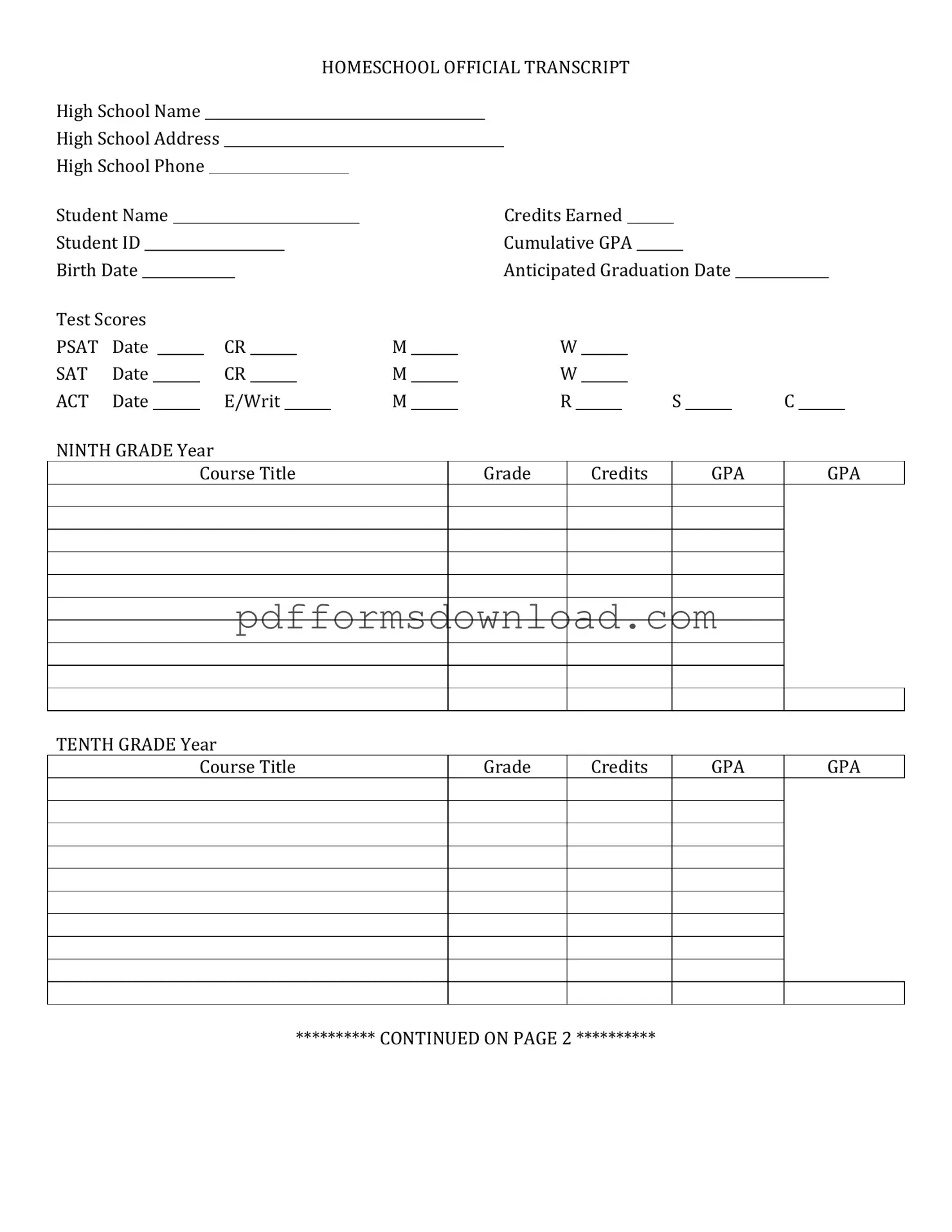What is a High School Transcript?
A high school transcript is an official record of a student's academic performance during their high school years. It typically includes courses taken, grades received, and credits earned. This document is crucial for college applications, job opportunities, and other educational pursuits.
Why do I need a High School Transcript?
You need a high school transcript to demonstrate your academic achievements to colleges, universities, and potential employers. It serves as a formal verification of your education and is often required for admissions, scholarships, and job applications.
How can I obtain my High School Transcript?
To obtain your high school transcript, contact the school you attended. Most schools have a specific process for requesting transcripts, which may involve filling out a form or submitting a request in writing. Be prepared to provide identification and possibly pay a small fee.
What information is included in a High School Transcript?
A high school transcript generally includes your name, the name of the school, the courses you completed, the grades you received, your grade point average (GPA), and sometimes standardized test scores. Some transcripts may also include information about extracurricular activities and honors received.
Is there a difference between an official and unofficial transcript?
Yes, there is a significant difference. An official transcript is typically sealed and sent directly from the school to the requesting institution, ensuring its authenticity. An unofficial transcript, on the other hand, may be printed by the student and lacks the official seal, making it less suitable for formal applications.
How long does it take to receive my High School Transcript?
The time it takes to receive your transcript can vary. Some schools process requests quickly, often within a few days, while others may take several weeks. It is advisable to request your transcript well in advance of any deadlines to ensure you receive it on time.
Can I request my High School Transcript if I graduated years ago?
Yes, you can request your high school transcript regardless of when you graduated. Most schools maintain records for many years, but the process may differ based on the school’s policies. Be sure to check with the school for specific instructions.
What should I do if there is an error on my High School Transcript?
If you find an error on your transcript, contact your high school’s registrar or administration office immediately. They will guide you through the process of correcting the mistake, which may involve providing documentation to support your claim.
Are there any fees associated with obtaining my High School Transcript?
Many schools charge a fee for processing transcript requests. This fee can vary widely, so it is essential to check with your school for their specific policy. Some schools may waive the fee for current students or under certain circumstances.
